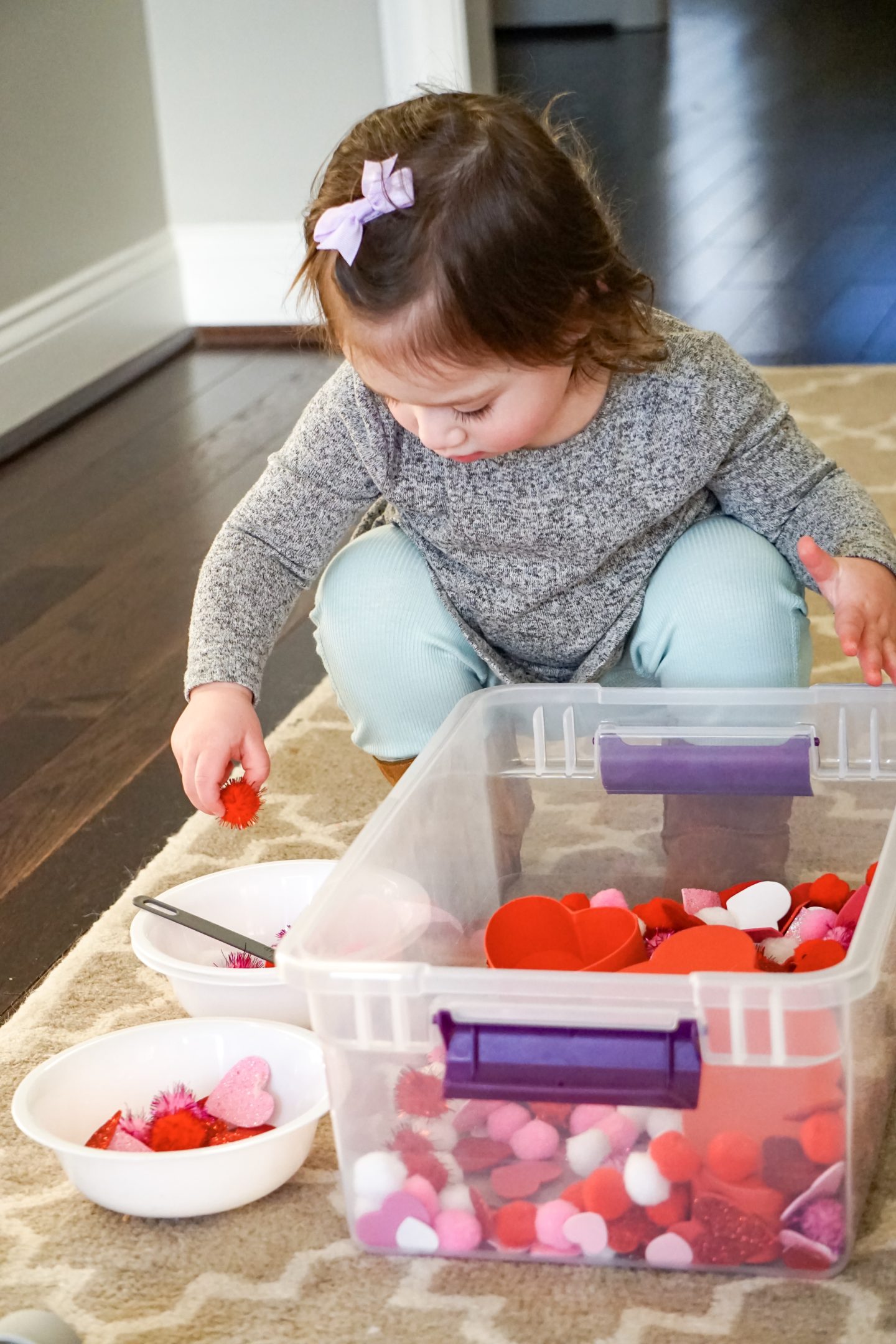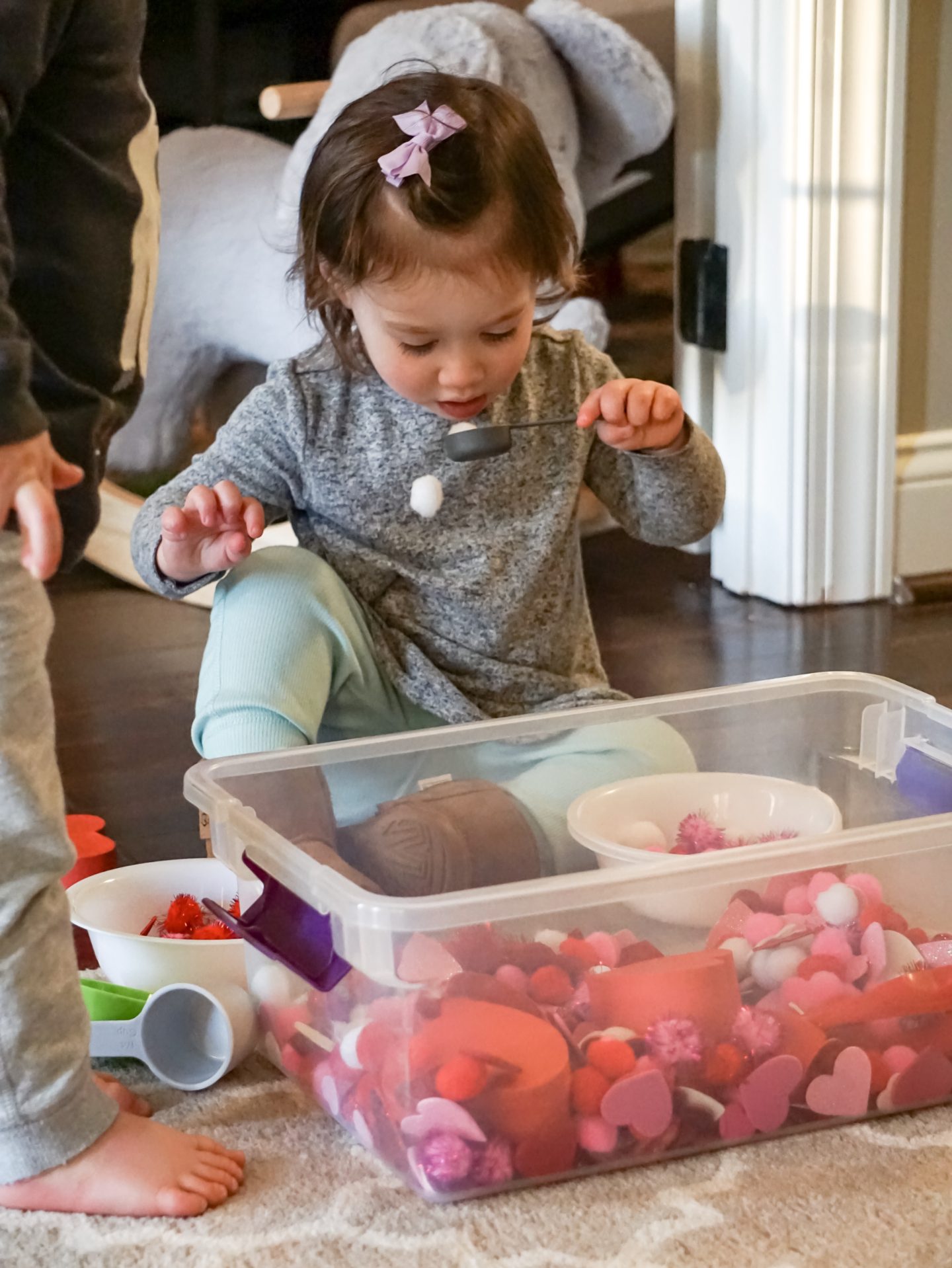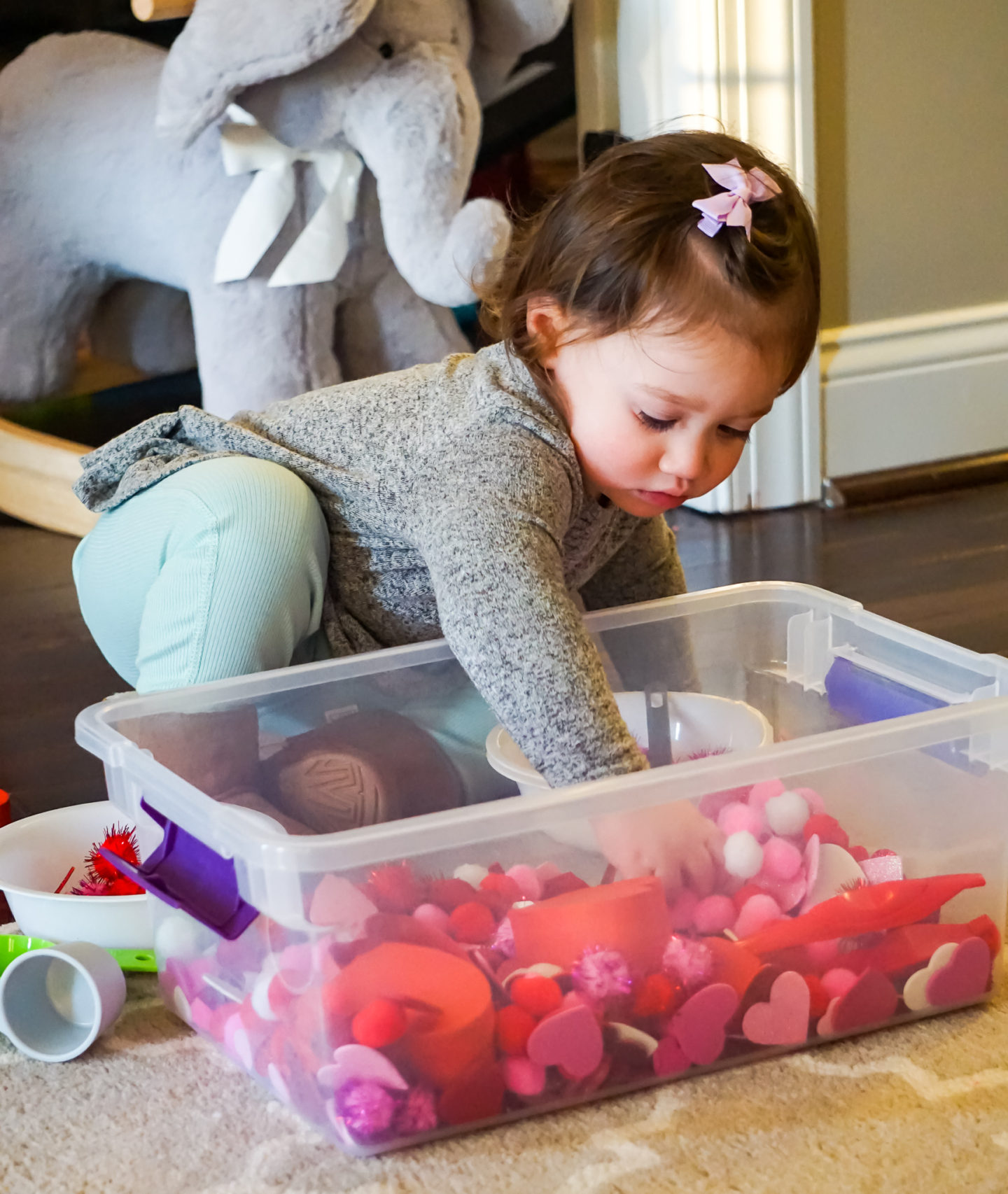
When I taught Kinder some 15 years ago, sensory bins were all the rage. They are perfect for hands on learning and for some children, it’s the most exciting part of their day. With the implementation of Common Core in classrooms, sensory bins have sort of fallen to the wayside. I’m making sure Grady gets ample play with monthly sensory bins because I know that once he hits Kindergarten, it won’t be the hands on play that it used to be.
But first:
What is the point of a sensory bin?
- develop fine motor skills by using their hands to interact with materials in a variety of textures, shapes and sizes
- develop cognitive skills by counting, measuring, organizing, matching, labeling, sorting, etc.
- develop language skills by attaching words to objects and using conversation to describe the pieces
- captures children’s attention and engages their minds
- foster’s creativity since there are no set rules on how to use a sensory table
With that said, I created a Valentine themed sensory bin for him to play with. All I did was throw in a variety of table scatter that I found here and there. Different shapes, textures, sizes and colors all contained in one box!
Gradys’ friend, Lo, was WAY more interested in the box than Grady. She took her time and kept going back and forth and dug around when she felt like it. I left it out so she could explore at her leisure. That’s the whole point of the box! No rules. Play when you want. Play HOW you want.
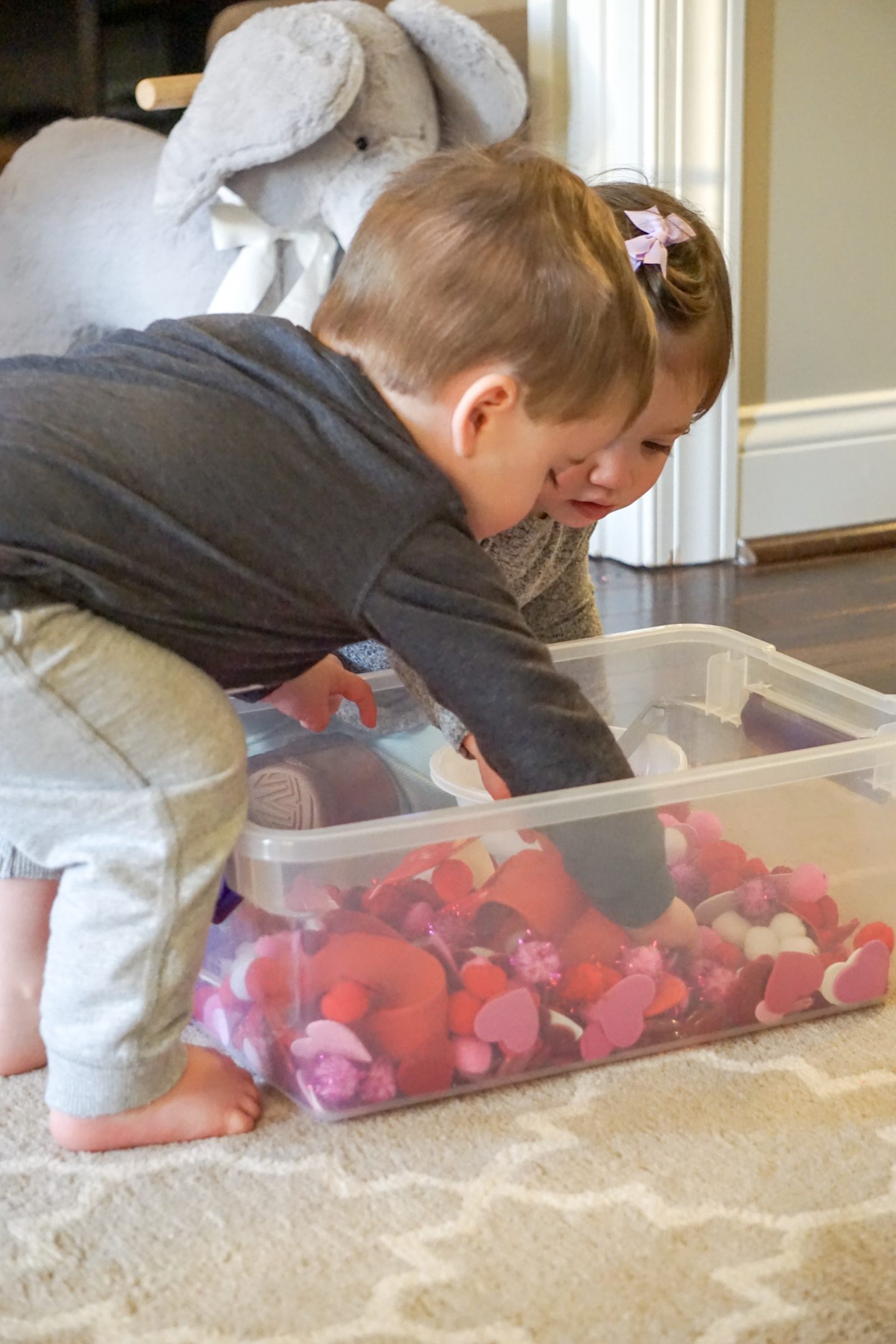
Lo liked to fill the little bowls and walk around with the contents. She also liked to pretend she was sipping it up. You can see Grady was only interested because SHE was playing with it this day.
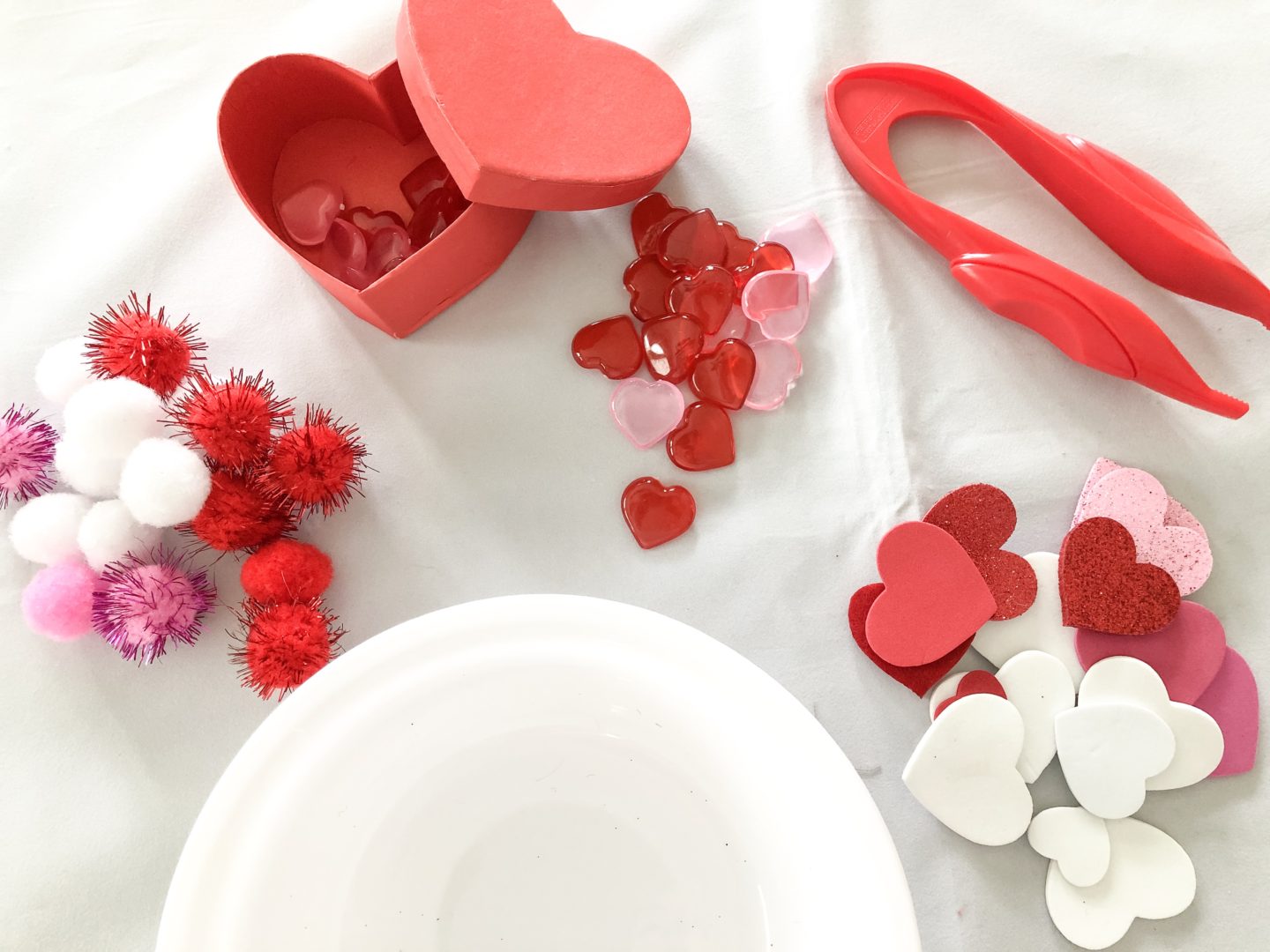
pom-poms of different colors (dollar general)
plastic heart table scatter (dollar tree)
foam hearts of different colors and sizes (michaels, dollar general, dollar tree)
little heart boxes to practice opening and closing (target dollar spot)
bowls (3 for $1 at dollar tree)
tweezers (dollar tree)
Say you have a child that is developmentally ready to do MORE with the sensory bin. Maybe they are getting bored with the pretend play. That’s when you can sit with your child and use the sensory bin as an educational tool!
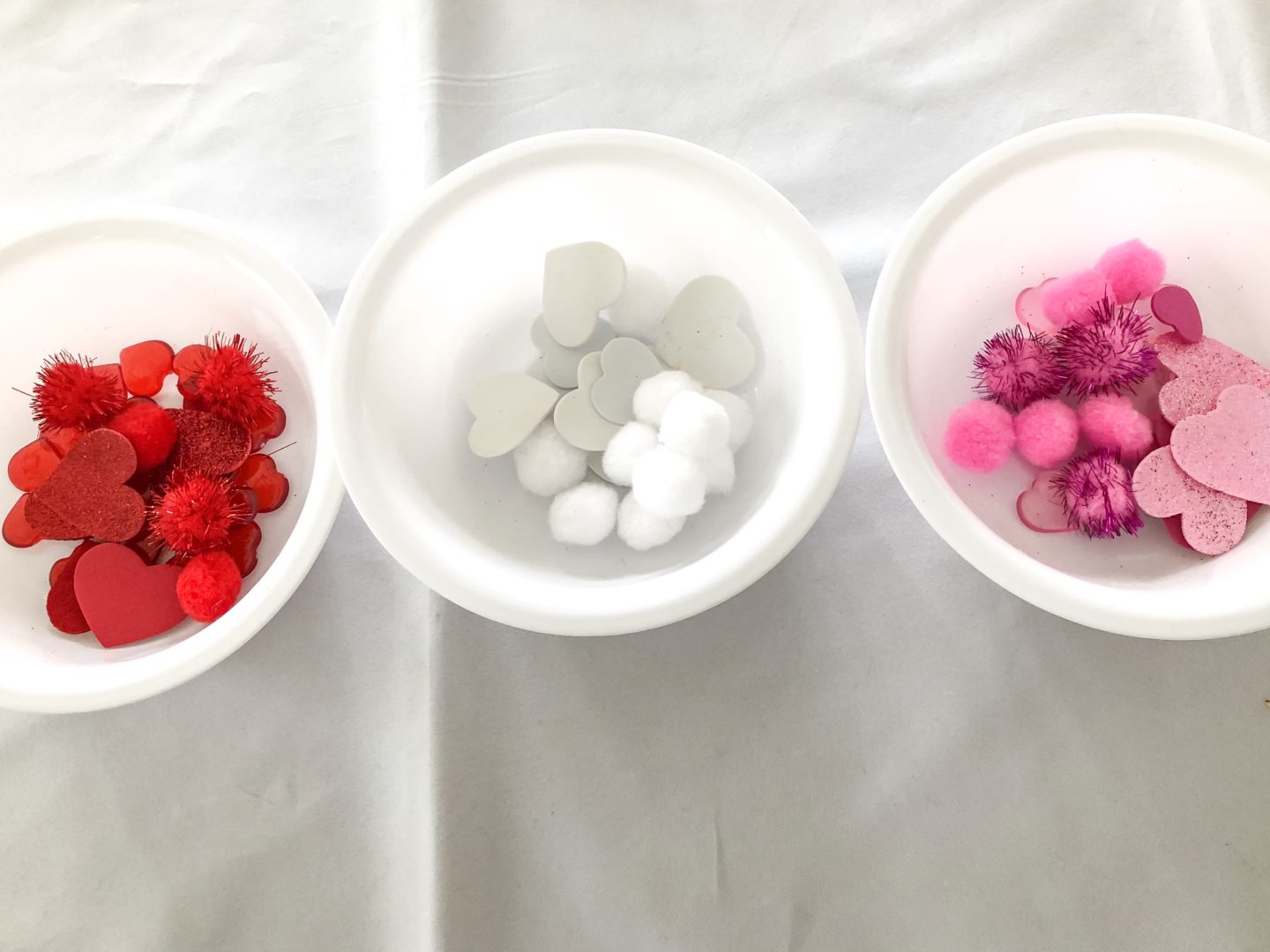
sort by color 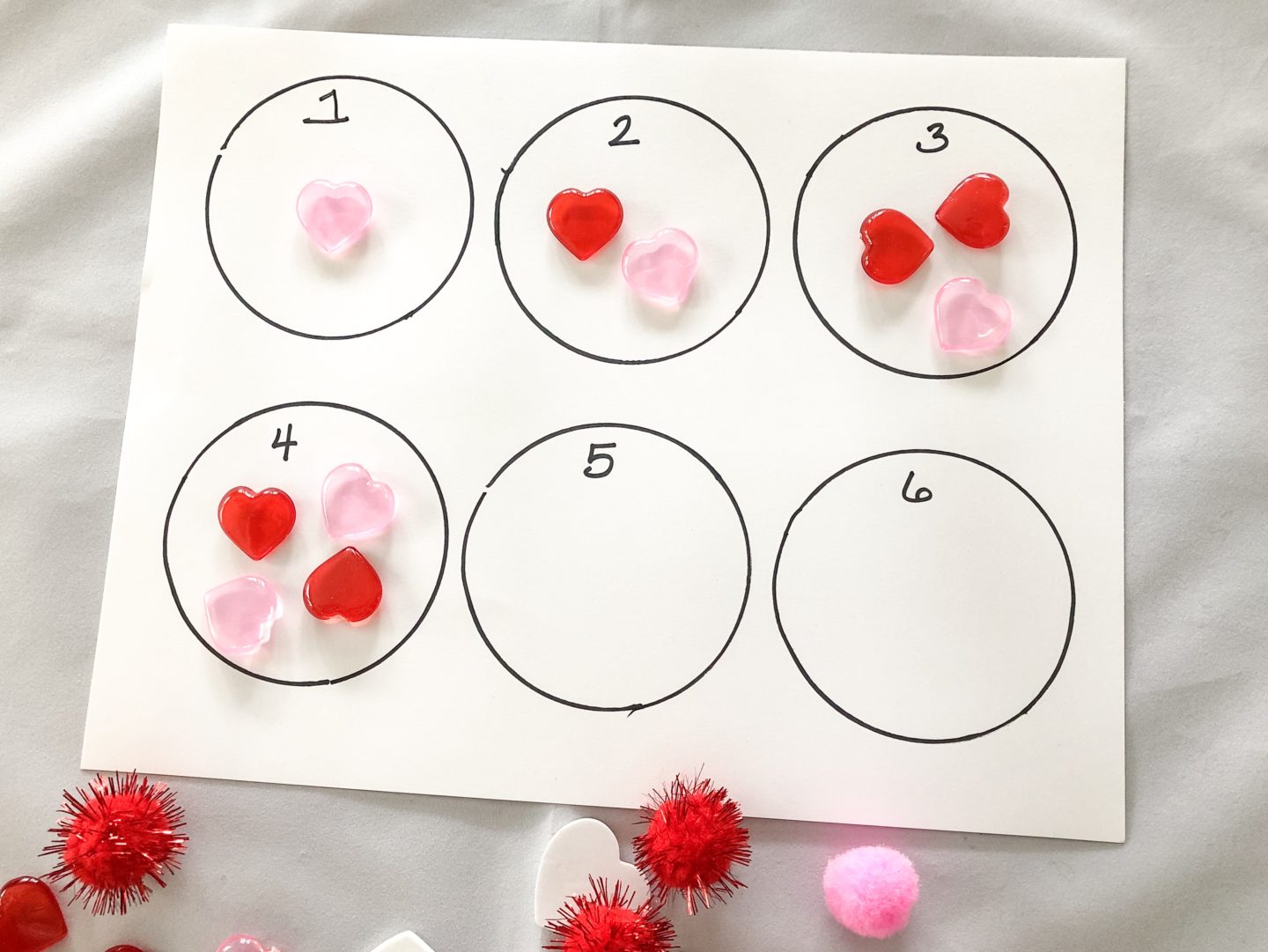
counting (I just used a round biscuit cutter to make the circles)
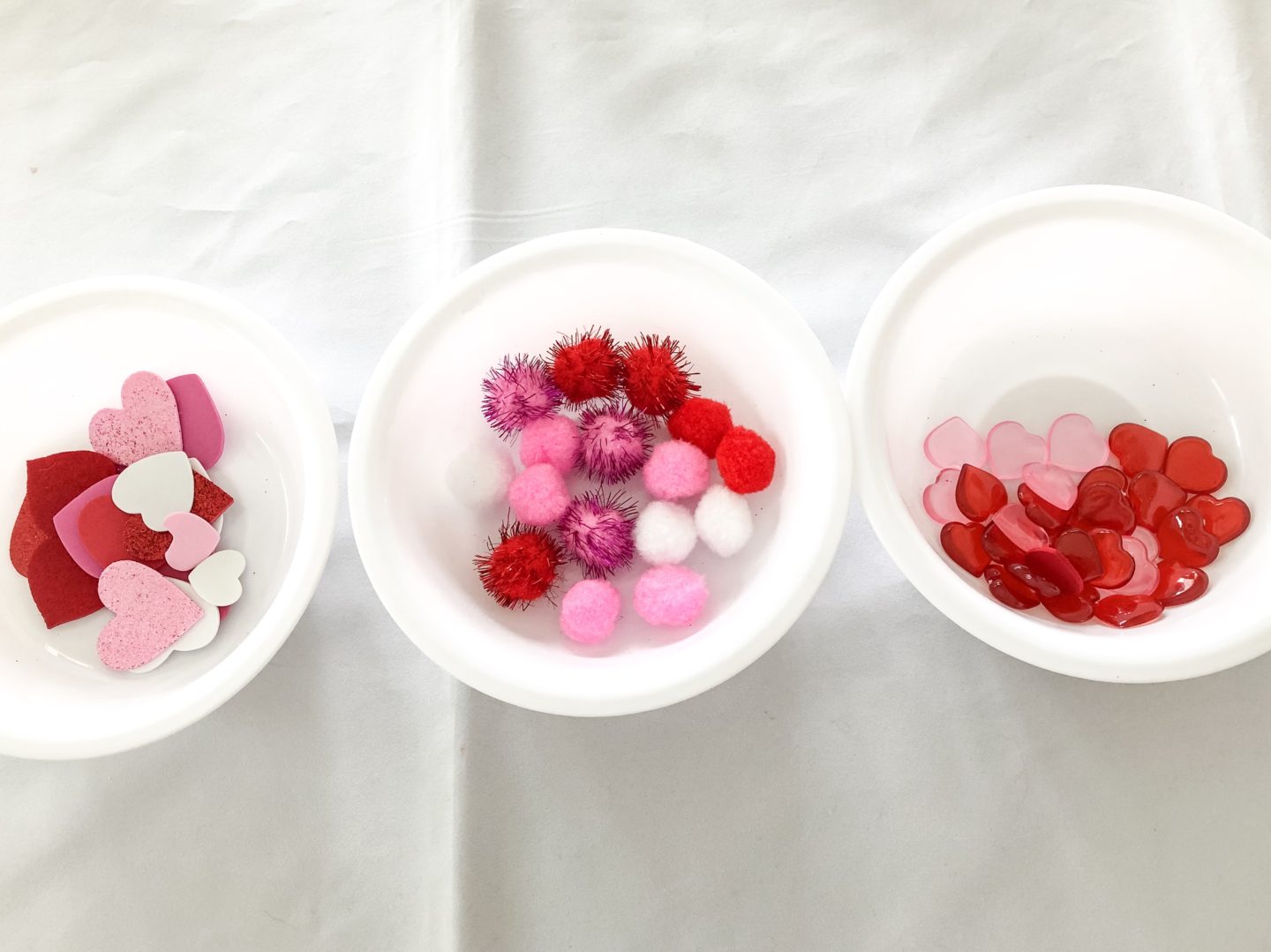
sort by material (foam, fuzz and plastic) 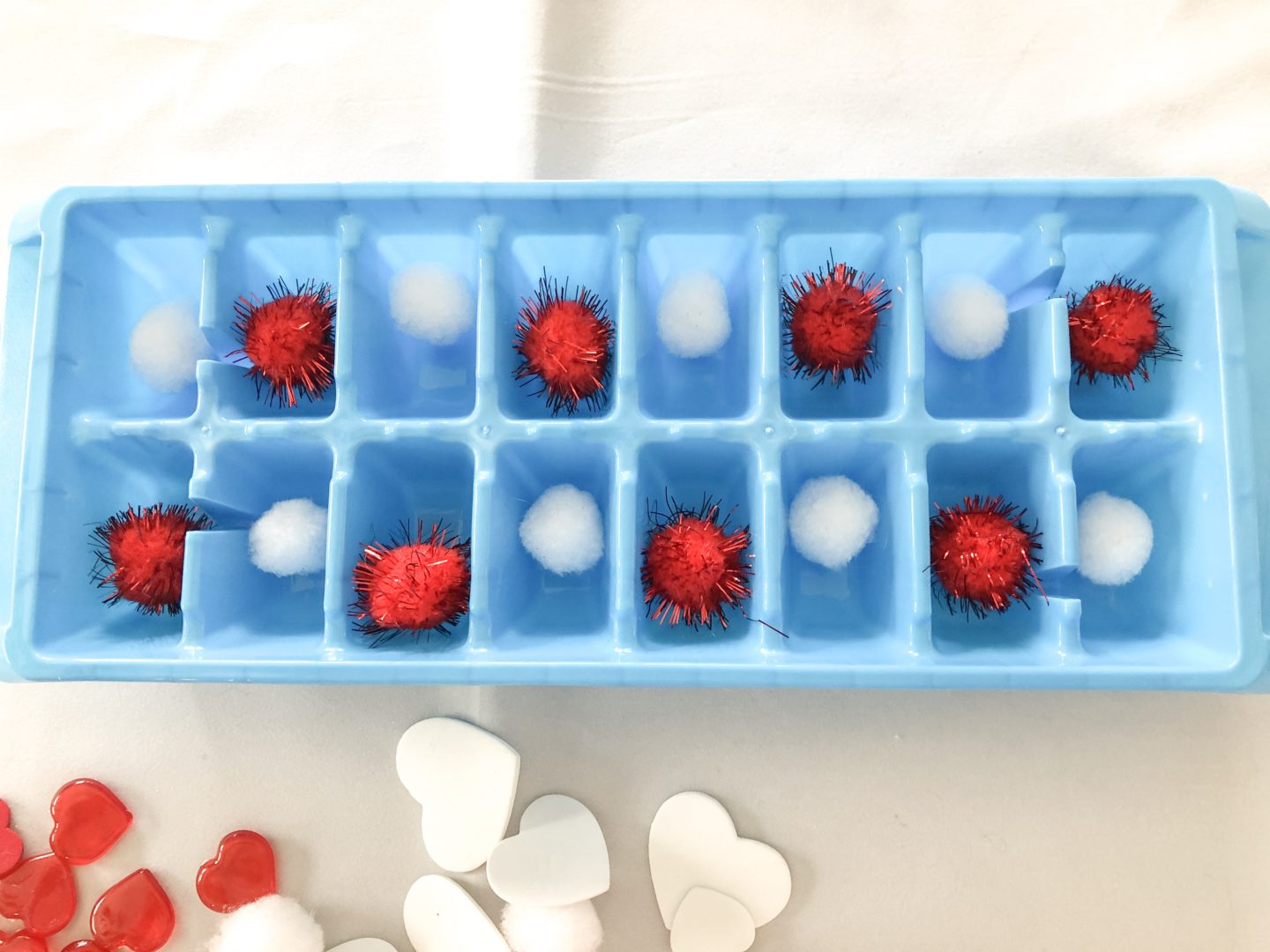
make patterns with an ice cube tray
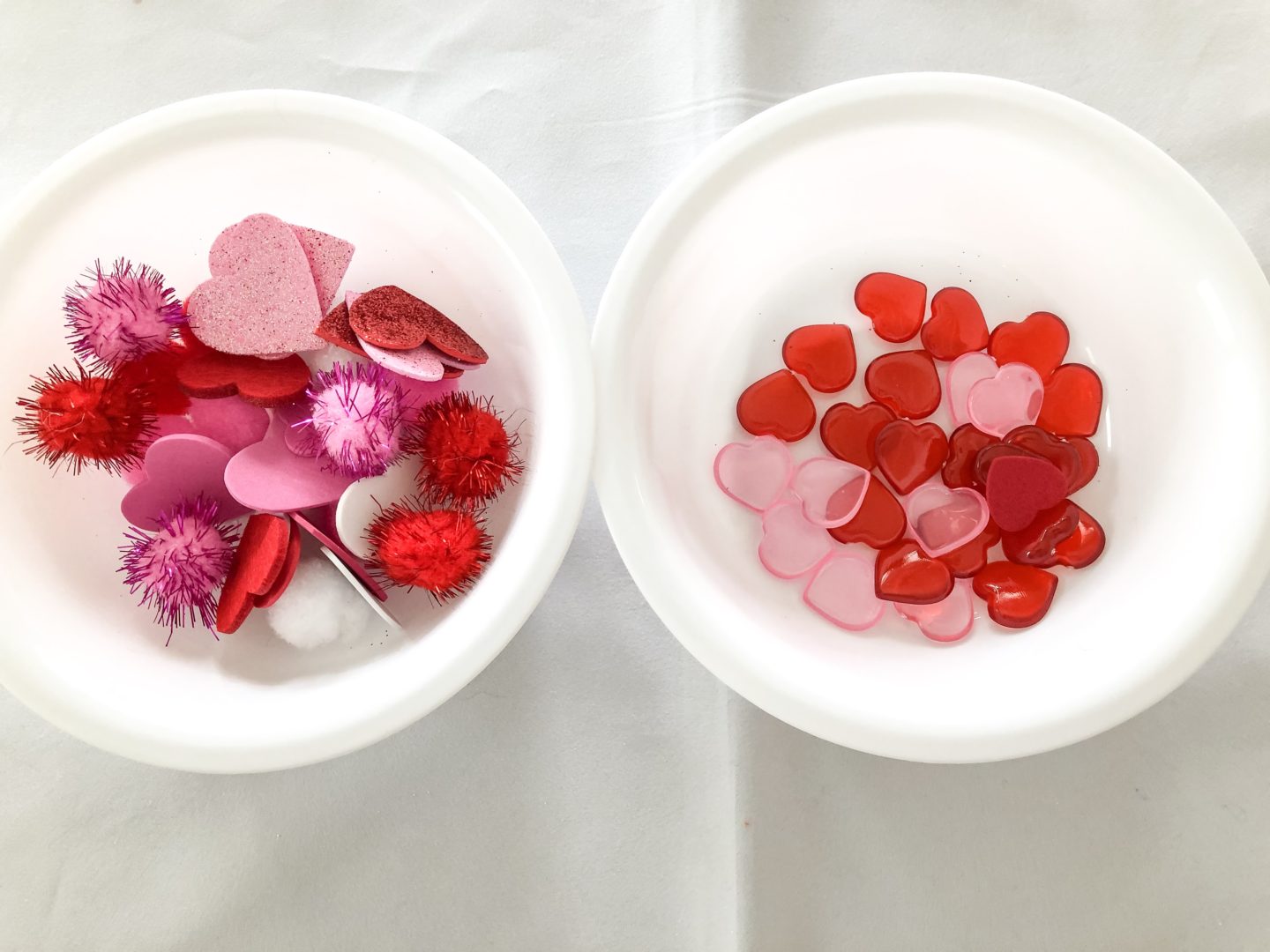
sort by soft vs. hard 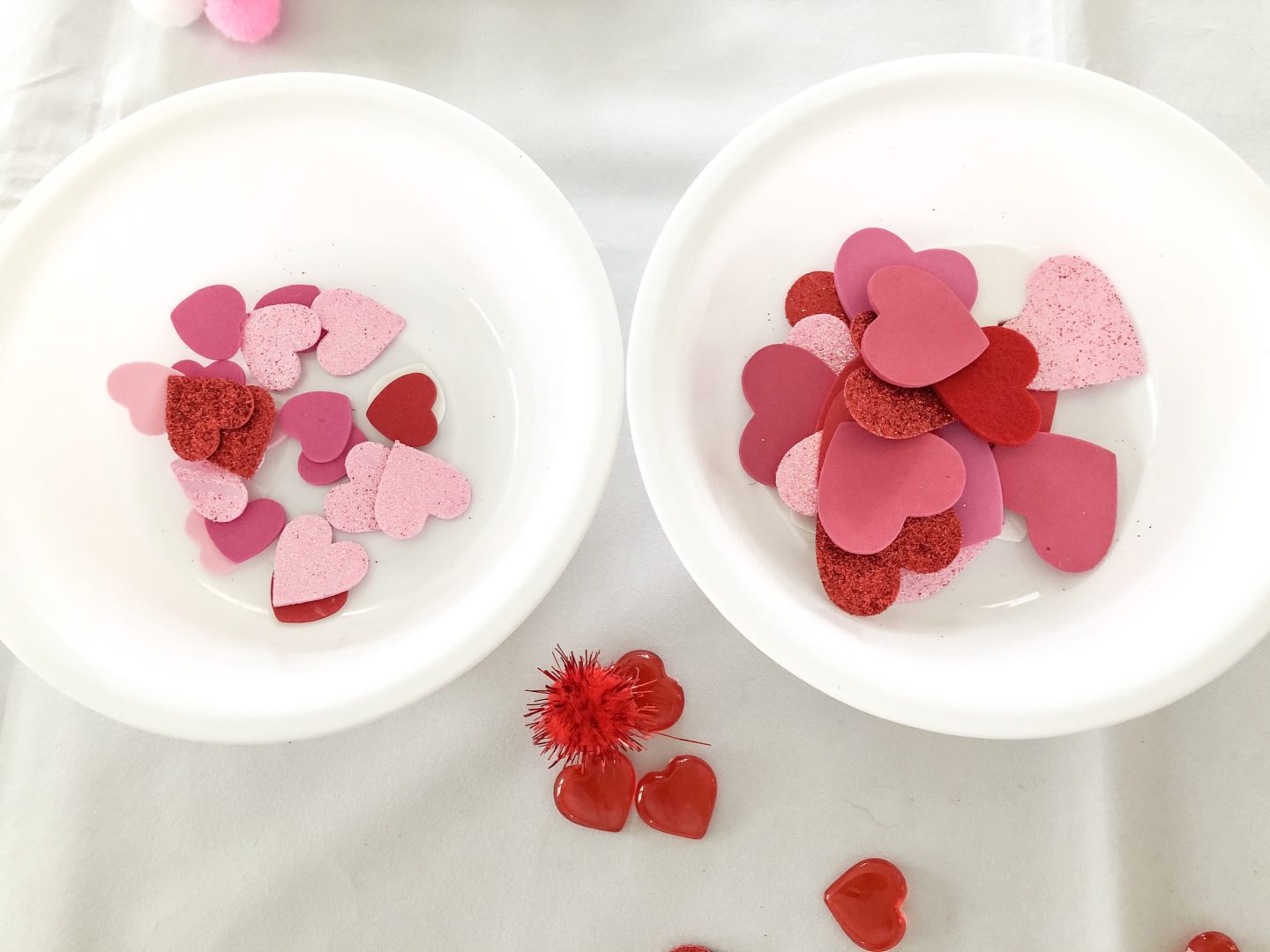
sort by size (small hearts vs. big hearts)
These are just a few of the things you can do with the items from the bin. Or, if they’re not ready, just let them play! Let them be little!
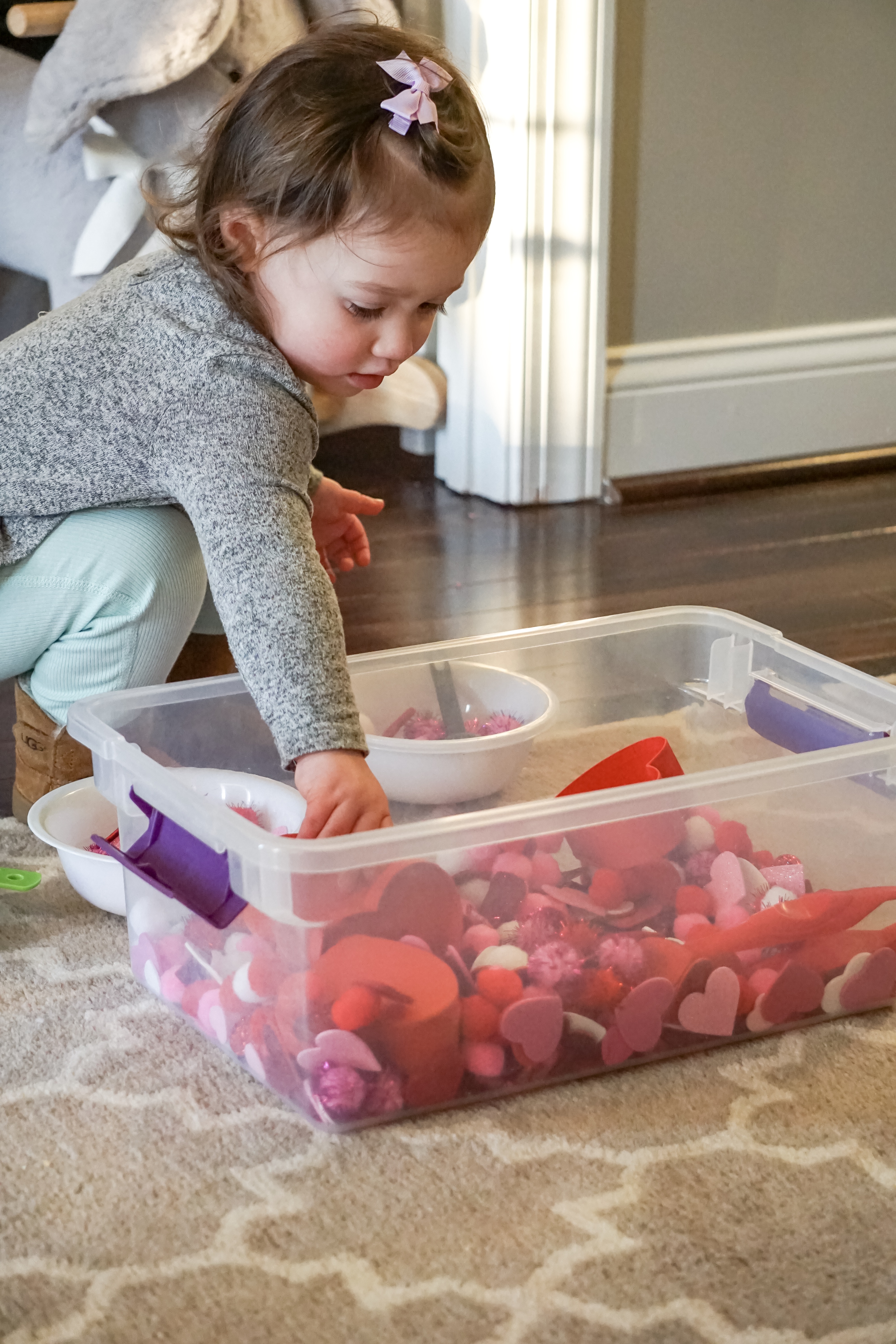
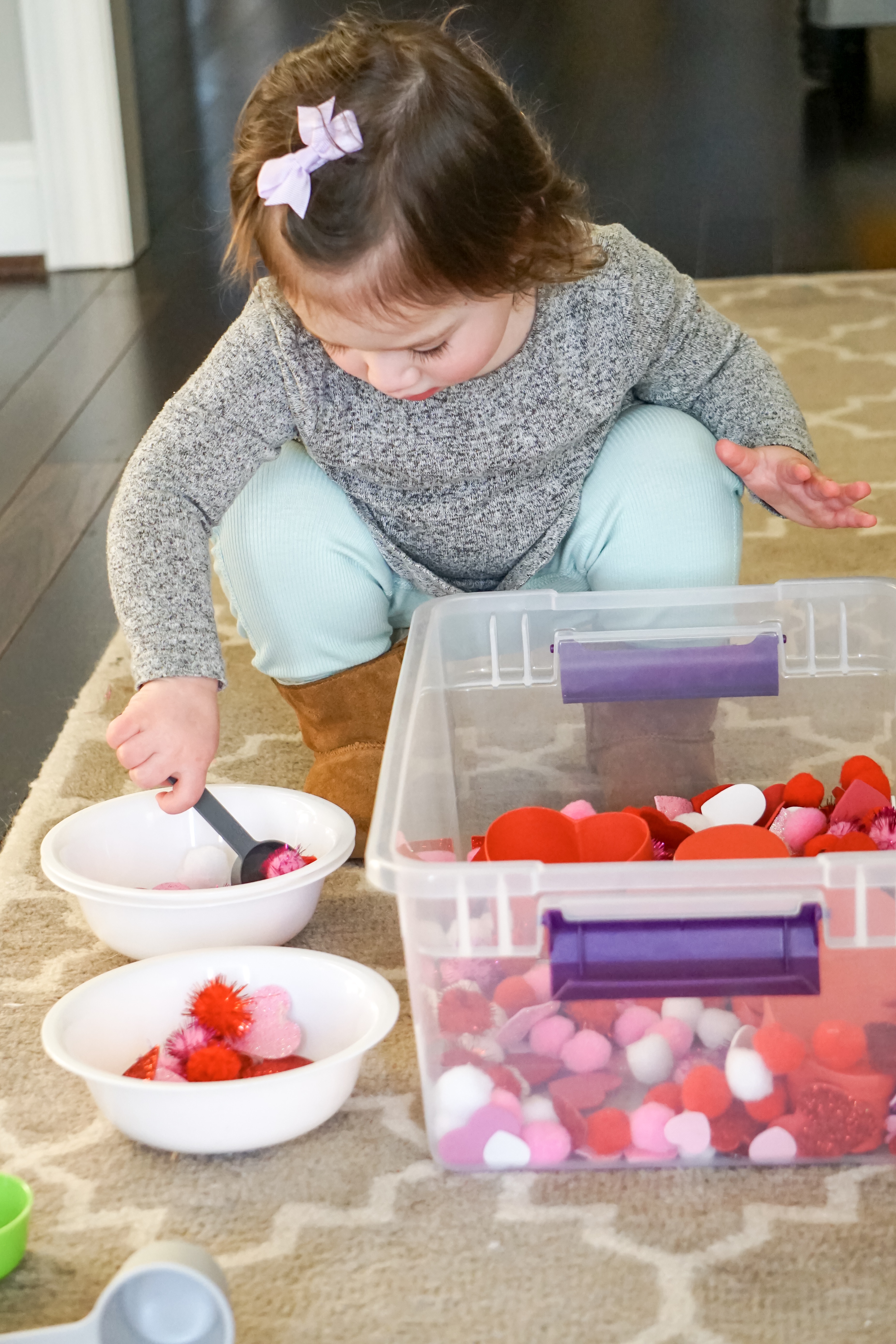
Have fun!
~Ashley
